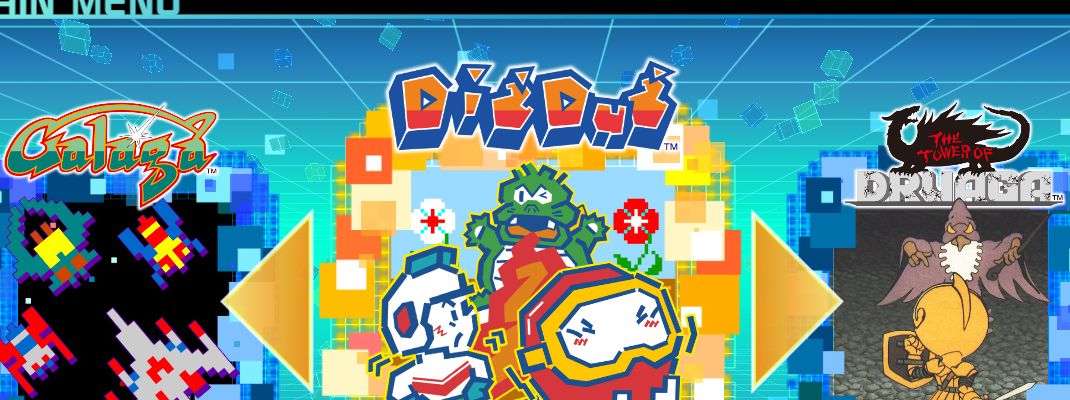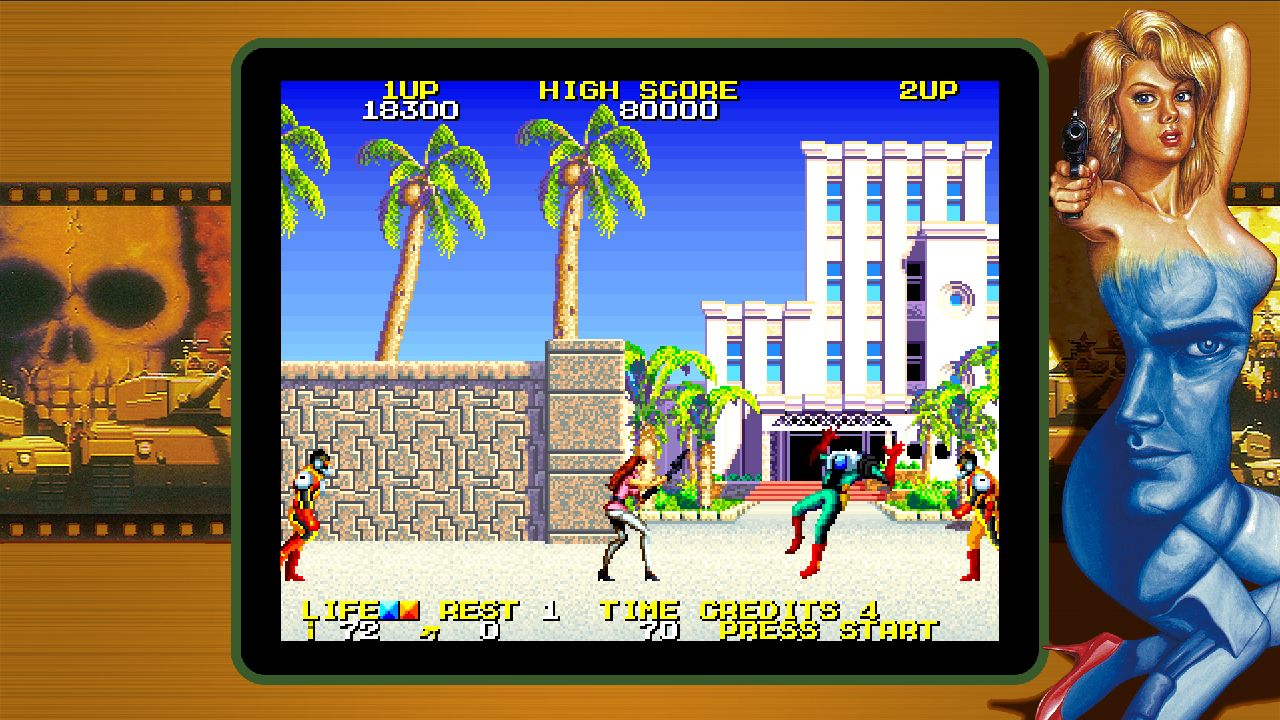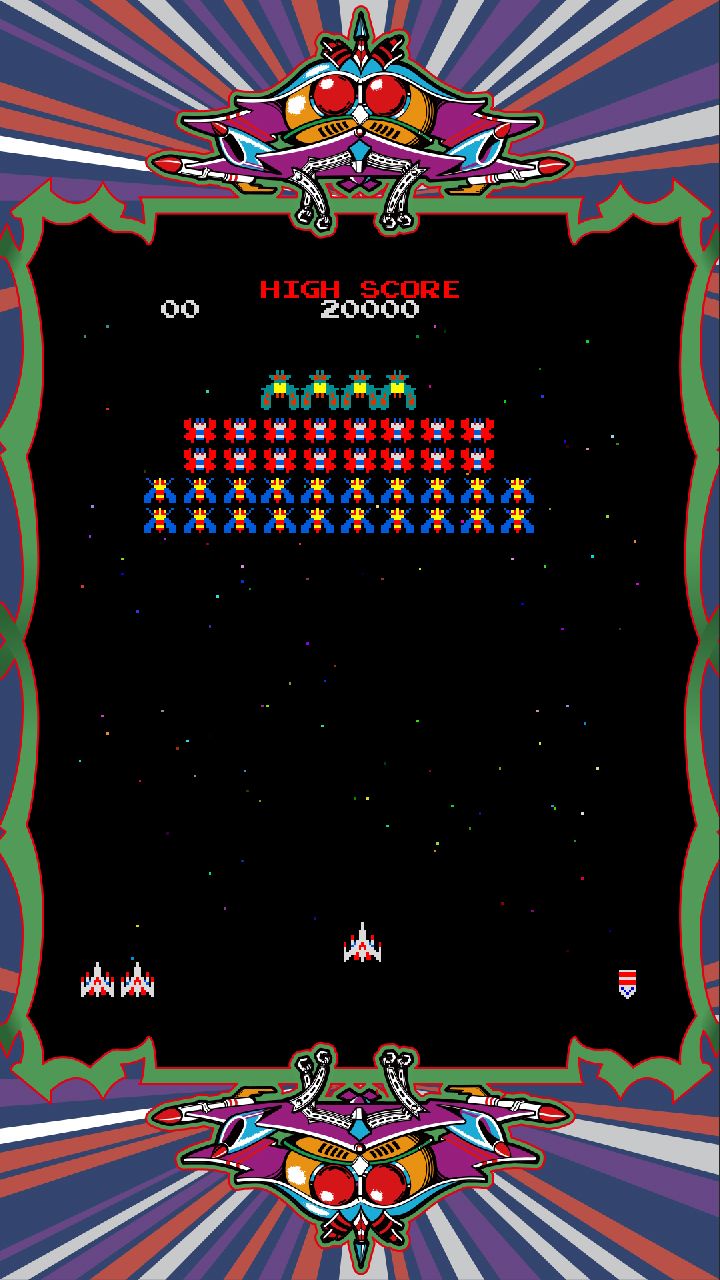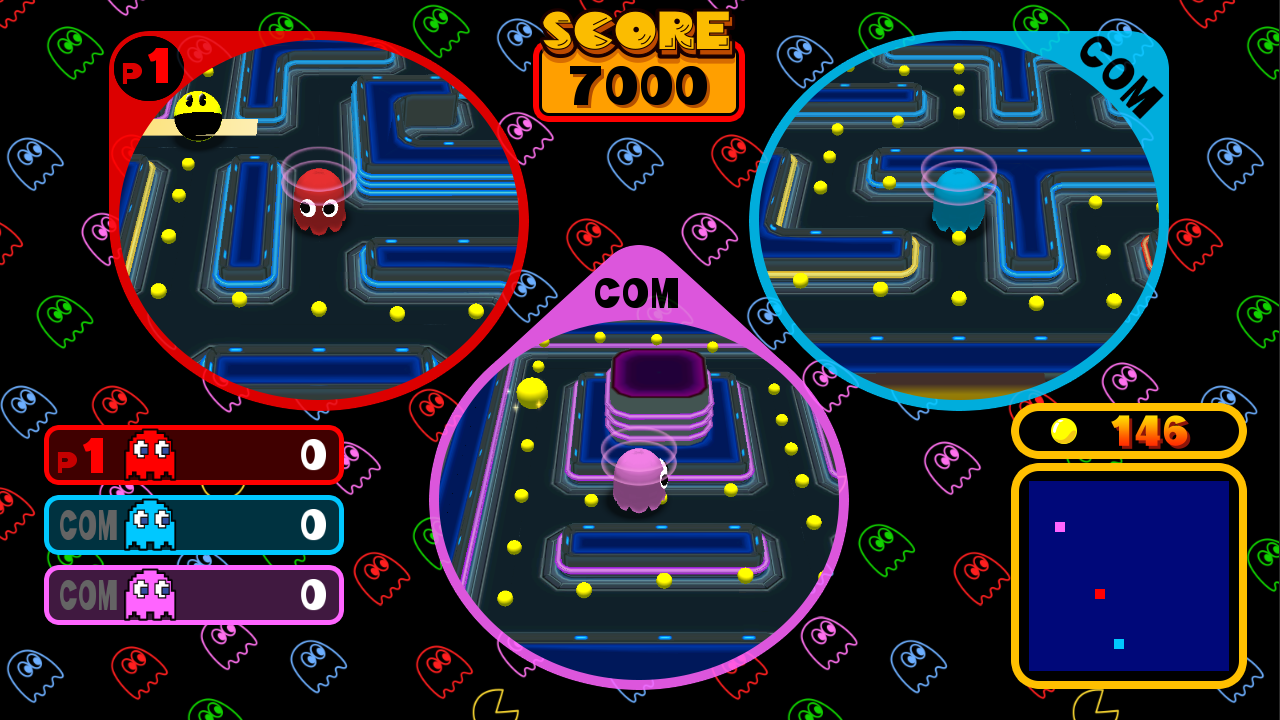Namco Museum collections have been keeping relics of gaming in circulation for over twenty years across multiple consoles. The newest collection features ten games from the '80s and early '90s along with Pac-Man Vs, originally released for the GameCube, for a total of eleven games. Most of these games are included in previous Namco Museum collections, but the Switch brings some "new" titles to the museum: Rolling Thunder 2, Tank Force and Splatterhouse, bringing the ESRB rating to T and breaking the the long standing tradition of having a E rating or the equivalent for whatever rating systems were used at the time.
The games curated for Namco Museum are Dig Dug (1982), Galaga (1981), Galaga '88 (1987), Puc Pac-Man (1980), Pac-Man Vs. (2003), Rolling Thunder (1986), Rolling Thunder 2 (1990), Sky Kid (1985), Splatterhouse (1988), Tank Force (1991) and The Tower of Druaga (1984). With one exception, this collection is geared towards fans of the coin operated machine era, which is par for the course with this series. People who grew up in the age of arcades need to only look at the list of included games to determine whether or not they want this, but that is not to say these games do not provide a certain level of enjoyment that for everyone, even if they've never seen an arcade cabinet in the flesh.
To give a quick rundown of each arcade game, Dig Dug has the player controlling a guy who digs down into the earth eliminating monsters, either by pumping them with air until they explode or having giant rocks fall and crush them. Galaga has the player take control of a spaceship that shoots waves of aliens that look like bugs appearing at the top of the screen, with Galaga '88 being the same concept but with more complexity and better graphics. The Rolling Thunders are run and gun side scrollers, with the second one adding a two player simultaneous option with much improved graphics and gameplay. Sky Kid is a horizontal scrolling plane shooter, which can be more fun with a friend due to the simultaneous two player feature. Splatterhouse is a horror themed beat 'em up. This title is interesting because when it was released it was very controversial for its terrifying imagery and graphic depiction of gory violence. The arcade port was censored when it was ported to home consoles, making changes to some enemies and weapons and giving the violence an overall toning down. Compared to today's standards this game is extremely tame, though it is fun to look back and see what upset the Tipper Gores of the world. Tank Force is a multi directional overhead shooter where the players controls a (wait for it) tank. The Tower of Druaga is a fantasy action game where the player travels through 60 labyrinthine floors of a tower to rescue a princess. Rudimentary elements of what would be later known as the action RPG genre can be seen here.
Pac-Man Vs. is the one anachronistic title in the bunch, but that doesn't mean it doesn't add value. Pac-Man Vs. was originally released in Japan in 2003 and ported to the States in 2004 as a multiplayer Pac-Man game. The full experience of Pac-Man Vs. requires two Switch units to play, but thanks to a free downloadable multiplayer only app from the Nintendo eShop only one copy of Namco Museum is needed. One to three players take on the role of the iconic ghosts on one Switch, while the other Switch is for Pac-Man. Much like the original, the goal is for Pac-Man to eat all the pellets without getting tagged by the ghosts. Due to to the Switch still being a relatively new console and quite difficult to find in stores, Pac-Man Vs. can be played with one to three players with a single Switch console, the catch is all players must play as a ghost.
The games included are faithful arcade ports with the added bonus of being able to add coins with the press of a button and not having to insert real quarters into the Switch. We at Hardcore Gamer highly recommend that you do not insert quarters or tokens into any opening on the Switch, we cannot stress this enough. Learn from our mistake. With the exception of Pac-Man Vs., all games have online leader boards so the arcade battle for having the top score on the cabinet continues in the modern equivalent. These games have challenge modes which aren't too exciting; they just stick the player in a certain level or under certain conditions and the goal is to complete the challenge as best you can for maximum points. In Splatterhouse the player has to kill as many enemies as possible in five minutes and avoid taking as much damage as possible, while Galaga was beginning as a triple shooter ship and gradually going to a double and then single while trying to shoot as many enemies as possible. It adds some variety, but nothing substantial.
A nifty feature about playing Namco Museum without a TV is that the screen can be rotated 90 degrees, making vertical games like Galaga take up more screen real estate instead of being crammed into a small window in the middle of the screen. Going vertical naturally doesn't translate as well for some games, but you can create your own challenge modes by making side scrolling games play upside and scroll to the left instead of the right. As I type this I realize one could get that effect just by holding the Switch upside down, but being able to flip the alignment is a cool feature and is advantageous to use it for a more vertical display with some games. The player can save progress in these games, which should be an mandatory feature for any game that can be played in a portable format and it's just generally nice not having to start from scratch every time.
Graphics, sound and control are exactly what veterans of these games remember. The controls are simple, if not quite as streamlined as some modern games, but sucking at any of these games cannot be blamed on bad controls. The graphics and sound are just as they were in whatever year each game came out, with some nice looking cabinet art that frames the gameplay added, kind of simulating playing the game on a stand up cabinet but also just looks a lot nicer than empty space on the sides.
Closing Comments
Namco Museum is practically a game where the title is the only review anyone really needs. The arcade ports are proper versions of the included games and the addition of Pac-Man Vs. and the ability to get the full multiplayer experience over two Switches with just one copy of Namco Museum is nice. Fans of Namco's classic arcade titles will find a lot to enjoy here. With over a dozen Namco Museum compilations already out there, however, the majority of the titles contained are available on a few different formats, and with eight of the ten arcade titles being from the '80s, it seems like this could have been a more generous offering by including a few more games, especially Namco classics that have not previously been in the museum. Those criticisms aside, though, Switch is a great way to play each and every one of these games.




